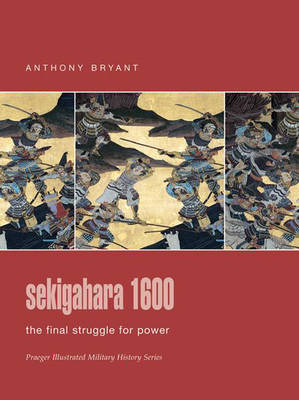Osprey Campaign S.
1 primary work
Book 40
Sekigahara was the most decisive battle in Japanese history. Fought against the ritualised and colourful backdrop of Samurai life, it was the culmination of a long-standing power struggle between Tokugawa Ieyasu and Hashiba Hideyoshi, two of the most powerful men in Japan. Armies of the two sides met on the plain of Sekigahara on 21 October 1600, in thick fog and deep mud. By the end of the day 40,000 heads had been taken and Ieyasu was master of Japan. Within three years the Emperor would grant him the title he sought - Shogun. Byrant describes the campaign leading up to this great battle and examines Sekigahara, including the forces and personalities of the two major sides and that of the turncoat Kobayakawa Hideaki.
Sekigahara was the most decisive battle in Japanese history. Fought against the ritualised and colourful backdrop of Samurai life, it was the culmination of a long-standing power struggle between Tokugawa Ieyasu and Hashiba Hideyoshi, two of the most powerful men in Japan. Both men had fought and intrigued to gain control of the country in the 1570s-80s, Ieyasu eventually submitting to Hideyoshi in 1584. On Hideyoshi's death in 1598 a council of regents was formed to govern and serve as guardians for his underage son. Ieyasu was a member and saw his chance to realise his dream of complete power. His greatest rival on the council was Hideyoshi's old companion Ishida Mitsunari. They met on the plain of Sekigahara on 21 October 1600, in thick fog and deep mud. Almost from the start the battle involved mostly hand-to-hand combat with mass desertions from Mitsunari's side to Ieyasu's. By the end of the day 40,000 heads had been taken and Ieyasu was master of Japan. Within three years the Emperor would grant him the title he sought - Shogun. Anthony Bryant recounts the campaign leading up to this great battle and examines Sekigahara, including the forces and personalities of the two major sides and that of the turncoat Kobayakawa Hideaki.
